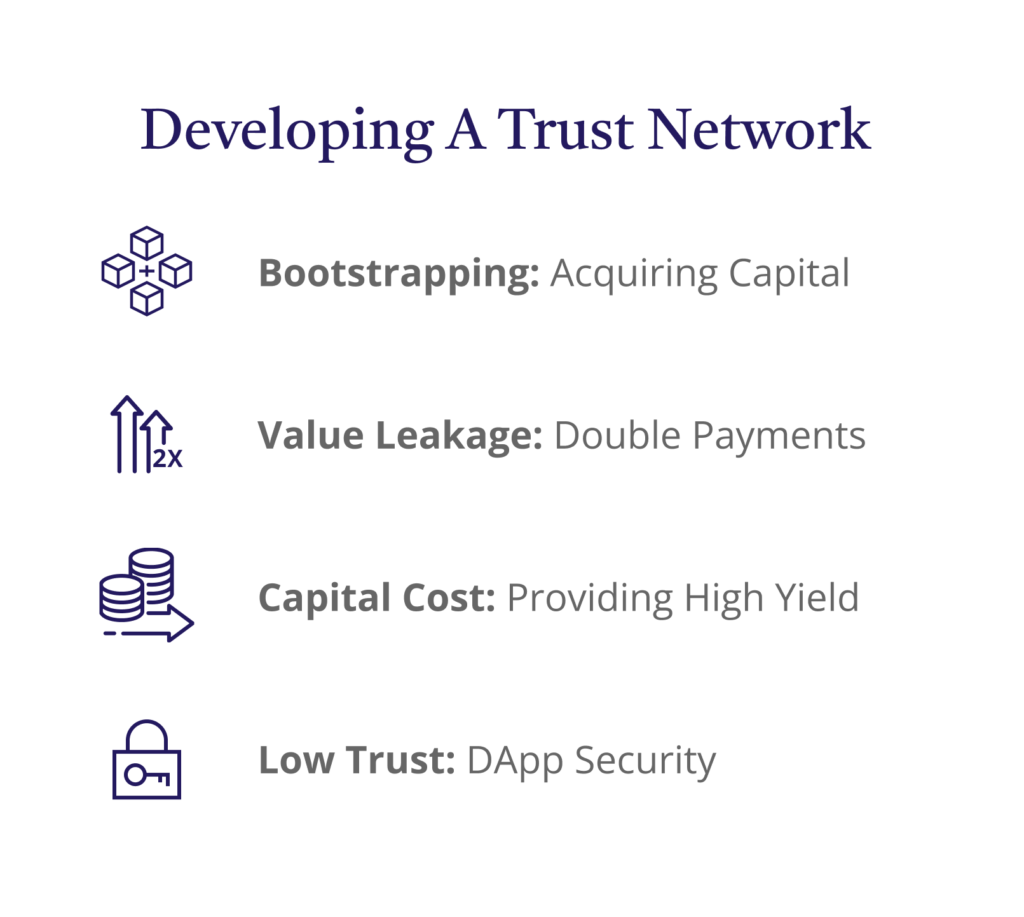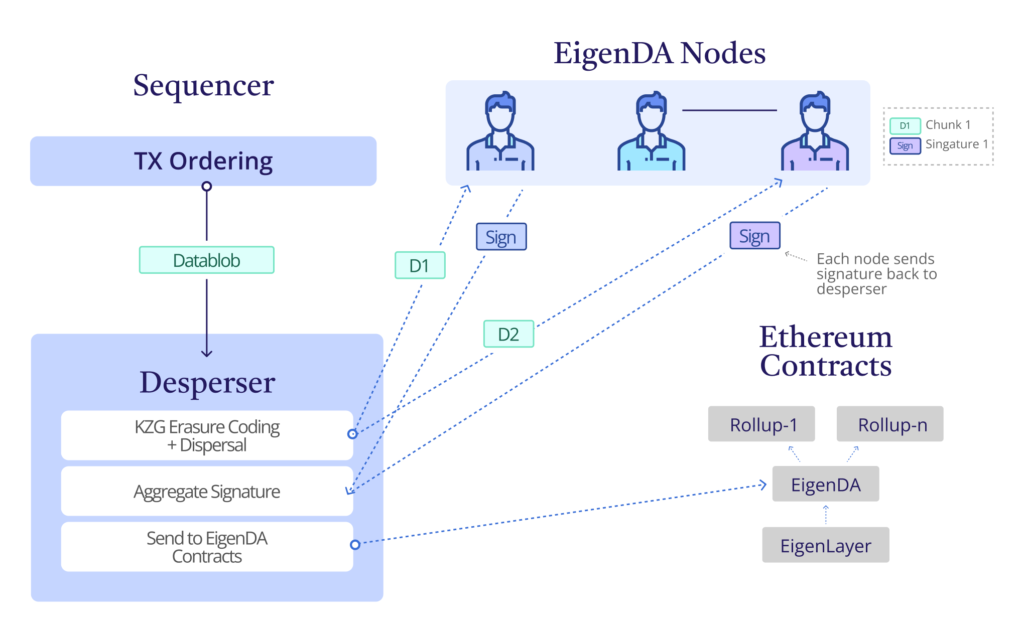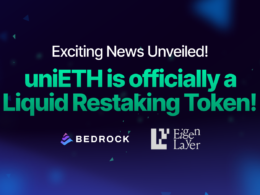Staking, validators, native restaking, operators, active validator nodes, modularity, consensus layer, execution layer, data availability layer. To some, that may have just been a random string of words and phrases that barely make sense, but they actually sum up the backbone of 2024’s massive DeFi wave. Today, Eigenlayer has seen a 30-day average TVL of $12.02Bn and as the restaking race accelerates into infinity, every crypto enthusiast is keeping an eye on Eigenlayer’s developments. For the uninitiated, here is a summary of the developments in DeFi recently, starring EigenLayer’s restaking protocol.
In its whitepaper, Eigenlayer aims to solve 4 big problems for projects that wish to deploy their own trust network.

- Bootstrapping: developers who launch their own chain have to bootstrap capital to secure their new trust network.
- Value Leakage: With each trust network deployed, users pay for transaction validation on that set of nodes in addition to the transactions validation that they pay for on the Ethereum network. This results in a leakage of value from Ethereum to other networks.
- Capital Cost: Validators who stake to secure a new trust network incur the opportunity cost of validating a new network with unknown rewards with higher price volatility compared to lower yield and price stability on the Ethereum network. These trust networks have to provide a high enough yield to outweigh that opportunity cost. The payout required by the network to validators often outweighs the operational costs for data storage or networking costs.
- Lower trust model for DApps: Any one moving part of a DApp can be a target of attack. However, the lower stake required to secure certain trust pools and middleware services makes these protocols more vulnerable than compromising the Ethereum network itself. Imagine an oracle network that is used by DApps on Ethereum. It would be easier to corrupt this DApp by attacking the oracle network rather than the Ethereum network itself even for DApps built on top of Ethereum.
About AVS and Validation
Validation is the process of validators proposing new blocks onto the network while consensus involves the majority of validators agreeing on the legitimacy and order of transactions. Hence, while developers can launch their own trust networks with their own validation mechanisms (i.e PoS, DPoS, etc), Ethereum dwarfs every other network in the security of its consensus layer with its whopping 800K active validators. The amount of capital for a 51% takeover of the network would be $34Bn. So, it’s plain to see how beneficial it would be for developers to leverage Ethereum’s consensus layer. These projects can be data availability, keeper networks, bridges, oracle networks, trusted execution environments, and are grouped under the umbrella term “Actively Validated Services” (AVS).
Modularity, Next Big Thing
Rollups were the beginning, but now, modularity has become the next theme in development as teams look for solutions to spread the burden of developing a trust network rather than bootstrapping the entire system. There are 3 parts to a network: an execution layer, a consensus layer, and a data availability layer. Where Layer-2 rollups focused on the execution layer and left consensus and DA to the Ethereum mainnet, other projects may be launching their own trust network with a different execution layer but wish to rely on Ethereum’s consensus layer while using Celestia for data availability. This is just an example of projects shifting to a more modular design.
Who is Eigenlayer and EigenDA?
Eigenlayer had their mainnet launch on 9th April 2024 after successful launches on the Goerli and Holesky testnets. RockX, together with the rest of the community, has been supporting Eigenlayer development from testnet to mainnet. As a result, the team has managed to restake 4.1M ETH, launched 5 new AVS, and attracted a flock of new Ethereum validators to restake with the protocol.
This is clearly a great development seeing great traction and new yield for everyone, but where is this yield coming from? EigenLabs has backed their words and launched EigenDA, its flagship AVS. Remember how Celestia can be employed as a data availability network? If you have been active in the space and have received your updates about recent new developments, you’d know that Celestia is just like any other network that has to go through the hassle of bootstrapping its network and incentivizing validators and investors to stake in the network (problem number 1). EigenDA also aims to provide alternatives to data availability for projects, albeit with different mechanisms compared to Celestia.
The difference is that EigenDA leverages on top of Ethereum’s consensus layer enhancing startup and operational costs while providing the security of the incumbent DeFi network. With this, EigenDA plans to provide data availability solutions for rollups to enhance transaction speed and costs to develop Ethereum’s scalability.
How does EigenDA work?
EigenDA works differently from other DA networks as it does not have its own consensus layer to secure the network and execute DA services. Eigen is designed to be censorship resistant, utilizes their unique proof of custody and increased security with further barricades to a 51% network attack.
Step by step process:

- A rollup’s Sequencer batches transactions on a block and sends a request to disperse the data blob. The disperser can be the rollup itself or a third party like Eigenlabs
- The Disperser splits the data into chunks. Using erasure coding, it creates redundant data shards as well as KZG commitments and multi-reveal KZG proofs. The disperser sends this commitment, chunks and KZG proofs to the node operator on the EigenDA network
- The Disperser distributes these data chunks, KZG commitments and KZG multi-reveal proofs to different EigenDA node operators. Operators use the KZG multi-reveal proofs and commitments to sign and verify the validity of these data chunks.
- Operators then store the data and send the signatures back to the Disperser.
- To ensure integrity of the data and behavior of nodes, EigenDA utilizes a Proof-of-custody. Because nodes might sign off on data items without storing them, EigenDA’s PoC requires operators to routinely compute and commit the value of a function which can only be done so if they are storing the data blob for the given period of time. If operators sign off without computing the function, their ETH will get slashed by anyone who has access to that data item.
- Lastly, the Disperser aggregates the signatures and submit them to EigenDA’s smart contracts to ensure that all signatures are valid.
Because EigenDA’s infrastructure is built around the concept of danksharding it is designed to be more in line with Ethereum’s roadmap and easily compatible with future upgrades. Its alignment with Ethereum also makes for increased economic value to the network. Comparing EigenDA to other DA avenues:

Proto-Danksharding — Part1
All of this is great news for any L2 or dApp built on Ethereum. By making Ethereum’s consensus layer available to everyone, its heavily decentralized security network will make the entire ecosystem even more secure.
For ETH holders, this opens up new income streams, primarily restaking. As part of the M2 upgrade, operators may choose which protocols to validate for, essentially creating a staking marketplace of sorts. This allows users to actively participate in projects they believe in on Ethereum’s ecosystem and earn additional yield on their staked ETH in return. If they hold tokens or points on these other protocols, they may receive rewards on those as well.
How Can Native Restakers Participate?
To be an AVS or EigenDA operator, individuals must meet strict hardware requirements to ensure adequate performance and minimize validation latency and churn. It is a multiple step process requiring both hardware and software components to meet the standards set by EigenLayer. If you’d like to set up your own operator, refer to EigenDA documentation for more information.
A simpler method would be to delegate staked ETH to an existing operator for EigenDA such as RockX – one of 56 AVS operators on EigenLayer at the time of writing. As RockX is a leading member (top 10) in the native restaking community with over 13,000 validators and 14k ETH restaked, and 97.8% rating on @ratedwb3, Institutional investors can rely on RockX to securely restake their ETH. Last month, RockX also launched its batch staking allowing holders to add up to 100 validators per staking operation to save time and streamline operations.
What is an AVS Operator?
In simple terms, an AVS operator like RockX runs AVS software built on EigenLayer and allows ETH holders to restake their ETH through EigenLayer onto AVS. Stakers can delegate their ETH to operators, and now with the M2 upgrade, select which AVS they would like to support and validate for. At the present time, there are 56 AVS operators on EigenLayer and over $12.4Bn worth of ETH locked on EigenLayer.Restaking is getting so popular that we are seeing over 28% validator outflows from staking giants like Lido and flowing into restaking protocols such as Ether.Fi and Renzo. The potential for growth in restaking has only just begun.
Conclusion
Eigenlayer has opened a new landscape for blockchains and the modular ecosystem. By providing infrastructure that can leverage Ethereum’s security, Eigenlayer has created a new avenue to bring value back into Ethereum’s ecosystem. The flagship AVS EigenDA is just an example of the possible use cases for the restaking sector. Together with many other members in the community, RockX will continue to move forward together to develop outstanding staking services for retail and institutional investors while continuing to improve and innovate.









